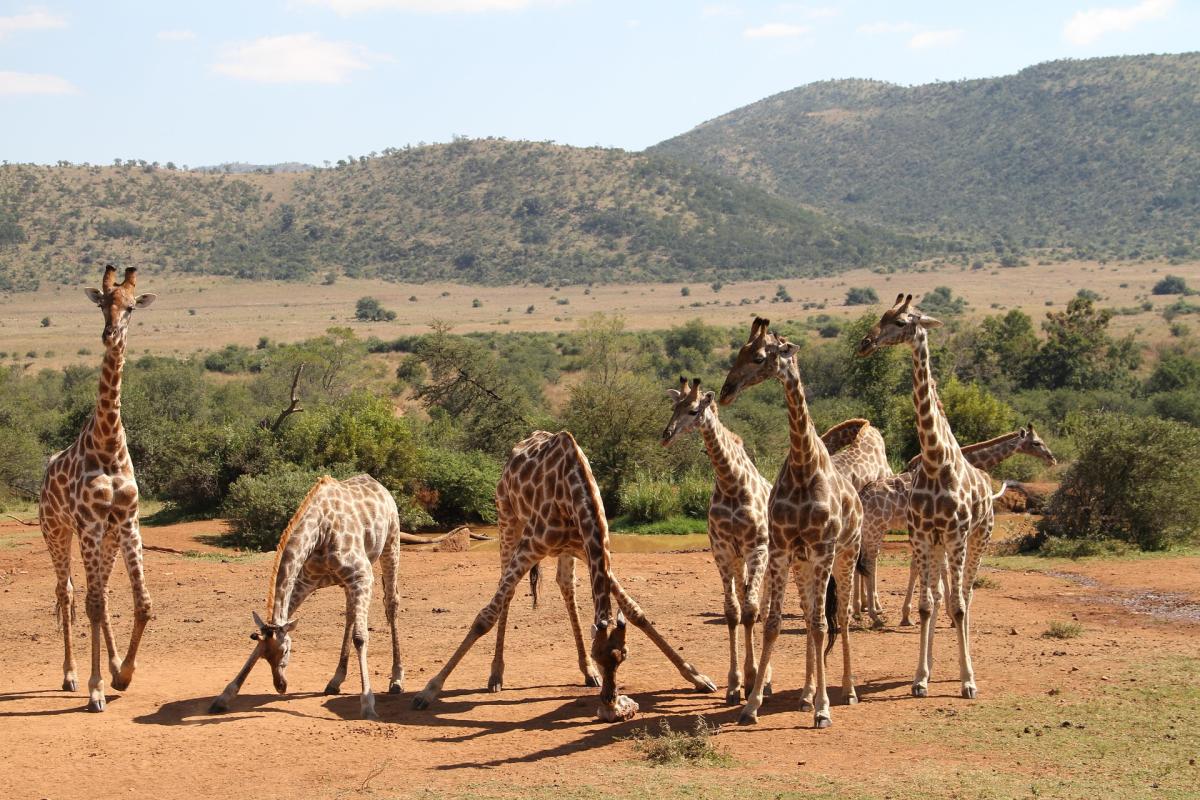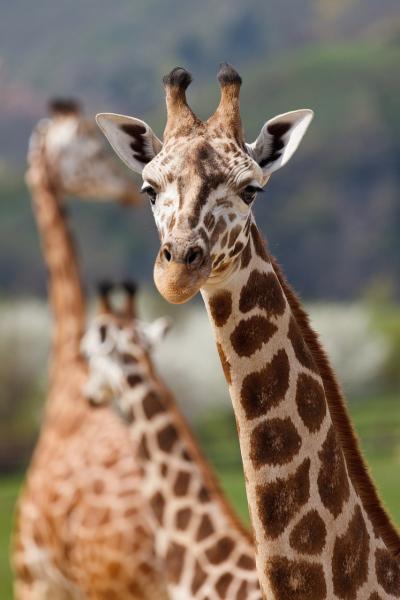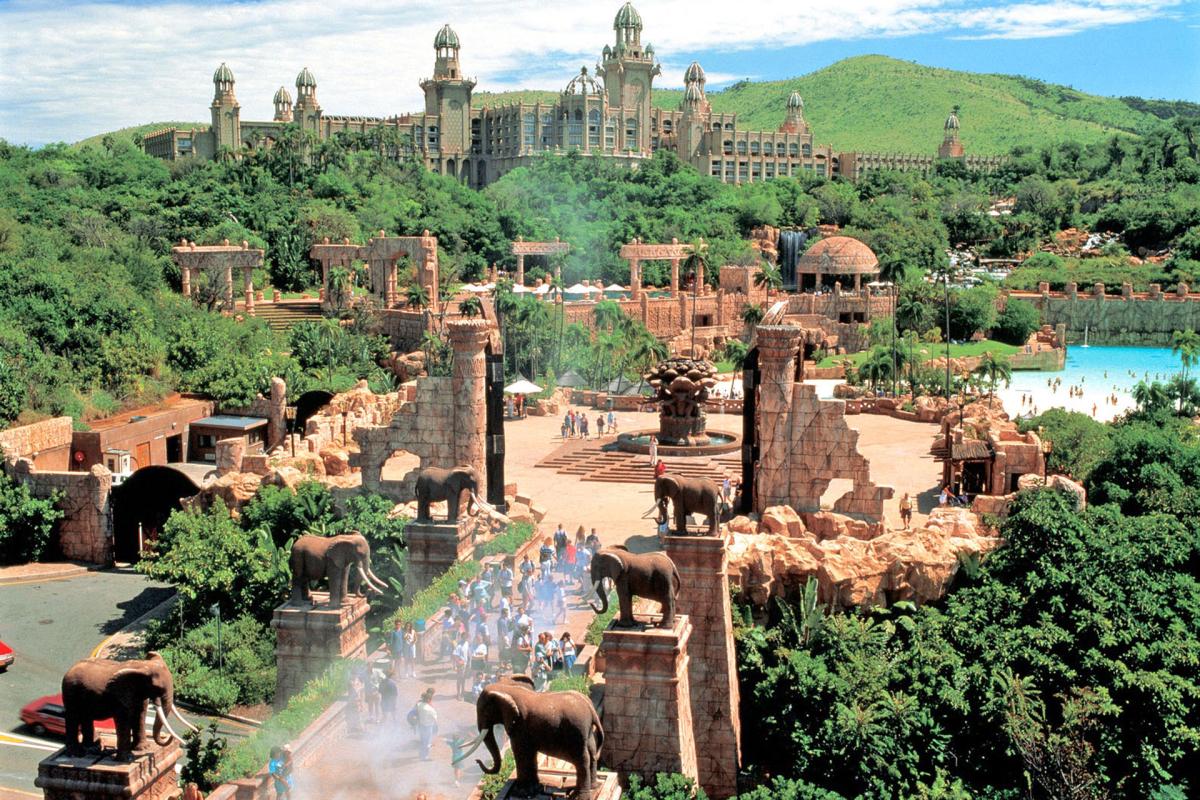
Best Time to Visit Pilanesberg National Park: A Complete Guide for Wildlife Enthusiasts
Pilanesberg National Park, a remarkable wildlife conservation area in South Africa’s North West Province, offers an unforgettable safari experience for nature lovers and adventure seekers alike. Nestled within an ancient volcanic crater, the park’s unique geological formations and diverse ecosystems provide a sanctuary for a rich variety of flora and fauna. Home to the "Big Five" and over 360 bird species, it serves as a prime destination for ecotourism, combining wildlife conservation with cultural and leisure activities. Whether you are embarking on a guided game drive, soaring above the plains in a hot air balloon, or immersing yourself in the traditions of local communities, Pilanesberg presents a harmonious blend of adventure and relaxation. Understanding the best time to visit can elevate your experience, ensuring optimal wildlife sightings and favorable weather conditions.
Pilanesberg National Park, located in the North West Province of South Africa, is a prominent wildlife conservation area renowned for its geological significance and rich biodiversity. Established in the 1980s within an ancient volcanic crater, the park spans a unique alkaline ring complex and serves as a transition zone between the Kalahari and Lowveld ecosystems. This unique setting supports a diverse array of flora and fauna, including over 360 bird species and the "Big Five"-lions, elephants, rhinos, leopards, and buffalos-making it a premier destination for ecotourism and wildlife enthusiasts. The park's successful conservation efforts have transformed it into a thriving ecosystem, characterized by diverse habitats and successful species reintroductions that enhance its ecological integrity. Visitors can engage in thrilling activities such as guided game drives, hot air balloon safaris, and immersive cultural tours that provide insights into the region's indigenous communities and their heritage. The presence of upscale accommodations and attractions like the luxurious Palace of the Lost City further contribute to Pilanesberg's appeal as a multifaceted travel destination. Controversies surrounding the park often relate to wildlife management practices and the balance between conservation efforts and tourism development. While significant strides have been made in community involvement and sustainable practices, challenges remain in ensuring that both ecological health and local economic needs are adequately addressed. As a result, Pilanesberg National Park stands as a microcosm of broader conservation issues faced in southern Africa, highlighting the intricate relationship between wildlife preservation and community engagement.
Geography
Pilanesberg National Park is situated in a unique geological setting characterized by an alkaline ring complex, formed approximately 1.2 billion years ago from volcanic activity. The park occupies the site of an ancient volcanic crater and is located within the transition zone between the Kalahari and the Lowveld ecosystems, which provides a rich diversity of habitats and wildlife interactions not commonly found in other regions. This transitional zone supports a variety of flora and fauna, including over 360 bird species, making it an attractive destination for birdwatchers and nature enthusiasts alike. The park's terrain features a blend of both Kalahari Thornveld and Moist Bushveld, creating a unique environment where different species coexist, such as springbok and impala. The Mankwe Dam, located centrally in the park, serves as a vital water source for wildlife, particularly during the dry winter months when animals congregate around water points. The landscape is dotted with various geological formations, including rare minerals found in the syenitic rocks of the crater, offering geological interest to visitors and scientists. Weather in the Pilanesberg area is marked by distinct seasons, with summer rains occurring from October to April, and a dry winter season from May to September that is optimal for wildlife viewing. The park's geography, coupled with its diverse ecosystems and rich geological history, makes Pilanesberg a significant site for both conservation and tourism within South Africa.
Attractions
Pilanesberg National Park, located in the North West Province of South Africa, offers a diverse range of attractions that cater to wildlife enthusiasts, cultural explorers, and relaxation seekers alike.
Wildlife Viewing
One of the park's primary attractions is its abundant wildlife, famously known as the home of the "Big Five"-lions, elephants, rhinos, leopards, and buffalos. Visitors can experience thrilling game drives aboard 4×4 safari vehicles, guided by experienced rangers who provide valuable insights into the park's ecosystems and wildlife behaviors. The park's successful conservation efforts, including the relocation of various animal species in the 1970s and 80s, have made it a remarkable example of ecological restoration.
Cultural Experiences
In addition to its natural beauty, Pilanesberg offers visitors opportunities to engage with the rich cultural heritage of the local communities. The Moruleng Cultural Precinct allows guests to learn about the Bafokeng people's customs and traditions, as well as explore their crafts through local artisan markets. Cultural tours provide deeper insights into the daily lives and historical narratives of the area's inhabitants, enriching the overall travel experience.
Accommodation and Amenities
Accommodations in and around Pilanesberg cater to various preferences and budgets. The Manyane Resort offers comfortable chalets and camping options, along with amenities such as a swimming pool and a curio shop selling local crafts. The Kingdom Resort, situated within the park, provides guests with a blend of relaxation and adventure, featuring spa treatments, mini-golf, and game drives.
The Palace of the Lost City
An iconic landmark in the area is The Palace of the Lost City, a luxurious 5-star hotel designed to evoke the fantasy of a mythical African kingdom. Its grand architecture, lush gardens, and themed decor create a unique and captivating atmosphere for visitors, making it a noteworthy attraction in the Pilanesberg region.
Culinary Delights
Visitors can also indulge in local cuisine, with many resorts and eateries offering traditional Bafokeng dishes prepared with fresh ingredients. Dining options range from casual on-site restaurants to exquisite culinary experiences within luxurious accommodations.
Activities
Pilanesberg National Park offers a diverse array of activities that cater to adventure seekers, nature enthusiasts, and those looking for relaxation. The park's unique setting within a volcanic crater allows visitors to engage with its rich wildlife and stunning landscapes through various experiences.
Game Drives
One of the most popular activities in Pilanesberg is the game drive, which provides a quintessential safari experience. Visitors can hop on a 4×4 safari vehicle and explore the park, with opportunities to see the "Big Five": lions, elephants, rhinos, leopards, and buffalos, along with numerous other species. Game drives typically last between 2.5 to 3 hours and are led by experienced guides who offer insights into the park's wildlife and ecology. These drives are usually scheduled during the early morning or late afternoon, which are optimal times for animal activity.
Guided Bush Walks
For a more immersive experience, guided bush walks are available, allowing participants to explore the flora and fauna on foot. Accompanied by knowledgeable rangers, guests can learn about traditional healing plants and track wildlife, gaining a deeper connection to the natural environment.
Hot Air Balloon Safari
For those seeking a breathtaking perspective of the park, the Pilanesberg Hot Air Balloon Safari is a unique adventure that offers stunning aerial views of the landscape and its wildlife. This experience can be a highlight of a visit to the area, allowing for an unforgettable sunrise or sunset panorama.
Birdwatching
With approximately 360 bird species residing within its borders, Pilanesberg is a paradise for birdwatching enthusiasts. Visitors can use binoculars to spot various birds across diverse habitats, including wetlands and grasslands. Notable species include the Fish Eagle and the Lilac-breasted Roller, making it a rewarding activity for both amateur and professional photographers.
Cultural Tours
Visitors to Pilanesberg can also engage in cultural tours that provide insight into the local communities. These experiences allow guests to learn about the customs, traditions, and daily lives of the indigenous populations, enhancing their understanding of the region's cultural heritage.
Spa Experiences
After an adventurous day, guests can unwind at local lodges and resorts that offer spa treatments. These facilities typically feature nature-inspired therapies that provide relaxation and rejuvenation, complementing the natural beauty of the park.
Additional Activities
Other activities available in Pilanesberg include scenic picnics, photography expeditions, and even abseiling for thrill-seekers. The Sun City resort, located within the Pilanesberg crater complex, also provides additional entertainment options such as a water park, golf course, and various dining experiences.
Accommodation
Pilanesberg National Park offers a diverse range of accommodations that cater to various preferences and budgets, ensuring a comfortable and memorable stay for visitors.
Luxury Lodges
For those seeking a lavish experience, several upscale lodges are available. Black Rhino Game Lodge is a prominent choice, featuring a main lodge with amenities such as a restaurant, bar, and swimming pool. The lodge includes 13 family suites and 4 executive suites, with rates starting at R4,680 per night based on double occupancy. Guests can enjoy instant booking and multiple payment options while ensuring their payment details are secure. Bush Lodge boasts 76 air-conditioned rooms, each designed in an African theme. These accommodations offer either two double beds or one king-size bed, alongside en suite bathrooms. The lodge’s restaurant serves themed meals, and guests can participate in bush braai events at the boma. Kwa Maritane presents a blend of luxury and self-sufficiency, featuring 90 rooms, 25 fully equipped chalets, and 28 cabanas. All accommodations include air-conditioning and modern amenities, with rates starting at R3,960 per night. The lodge also provides a convenient shuttle service to nearby attractions.
Unique Experiences
Finfoot Lake Reserve offers an intimate setting with eight Bush chalets that include en-suite bathrooms and outdoor activities such as fishing and safari drives. The reserve features a health and beauty spa and communal dining experiences under the stars. Tambuti Lodge is known for its exceptional service and intimate atmosphere, providing only five suites for a personalized experience. Guests enjoy gourmet meals and guided safari experiences in a beautiful setting.
Family-Friendly Options
For families and budget-conscious travelers, Manyane Resort is the largest accommodation option near the park, providing thatched African-style chalets that can sleep up to six people. The resort features a large pool and various amenities suitable for children. Bakgatla Resort also caters to families, offering various accommodations including executive safari tents and camping sites, along with access to a swimming pool and restaurant facilities.
Camping and Caravanning
For those preferring a more rustic experience, Pilanesberg National Park features two resorts, Manyane and Bakgatla, which offer camping and caravanning facilities. Both resorts provide electrical campsites and shared amenities, making it an excellent choice for outdoor enthusiasts.
Access and Transportation
Pilanesberg National Park is located approximately 2.5 hours' drive from Johannesburg, making it a convenient destination for travelers. Visitors commonly arrive via OR Tambo International Airport, which is the main gateway for international flights into South Africa. Upon arrival, travelers have various transportation options available to reach the park.
Shuttle Services
One popular choice is the shuttle service provided by Sandton Taxi Cabs (Pty) Ltd, a reputable transportation provider based in Pretoria. The company offers daily private shuttle services from Johannesburg to Pilanesberg National Park, with options for a 15-seat minibus for larger groups or a 4-seat sedan for private parties. Their services include personalized attention, flexible scheduling, and luggage assistance, ensuring a comfortable journey for all passengers. Customers can request specific drivers, child seats, and other amenities as needed, enhancing the tailored travel experience.
Pickup and Arrival Procedures
The shuttle service guarantees a seamless pickup experience. At the airport, drivers meet guests with a name board, while hotel pickups require just the hotel name, address, and preferred pickup time. Bottled water is provided during the journey, and specialized infant seats are available upon request for an additional cost. The high rating of 4.8 stars from customer reviews reflects the service's reliability and professionalism, with 90% of travelers recommending it.
Additional Transportation Options
In addition to shuttle services, travelers can opt for car rentals for more flexibility during their stay. Pilanesberg International Airport (NTY) is situated adjacent to the park, providing another convenient arrival point for visitors flying in. Rental cars allow travelers to explore the scenic routes surrounding Pilanesberg and access various attractions at their own pace.
Tips for Travelers
To ensure a smooth travel experience, it is advisable to book safari tours in advance, as they often have limited capacity. Additionally, travelers should arrive at their hotel lobby 10 minutes before the scheduled pickup time to avoid delays. Dressing in comfortable, neutral-colored clothing is also recommended for those planning to engage in outdoor activities within the park.
Best Times to Visit
The optimal time to visit Pilanesberg National Park is during the dry season, which spans from May to September. This period offers cooler weather and less dense vegetation, enhancing wildlife visibility as animals congregate around water sources, making them easier to spot.
Monthly Breakdown
May
As temperatures begin to drop, May marks the transition into the dry season. Visitors can expect pleasant weather, ideal for exploration and wildlife observation.
June to August
These months are characterized by comfortably cool temperatures, making it the slowest tourism season. This offers advantages such as lower accommodation costs and fewer crowds, providing a more intimate wildlife viewing experience. The mornings can be quite chilly, so it's advisable to dress warmly. This period is particularly rewarding for game viewing as animals are more active and visible.
September
September signals the approach of spring, with gradually rising temperatures. This month is excellent for birdwatching and witnessing the renewal of vegetation, adding to the park's beauty and diversity.
October
As the dry season peaks, October presents warm days and cool nights, offering optimal conditions for photography and wildlife sightings. However, it also attracts more visitors, so planning ahead is recommended to secure accommodations.
Considerations for Other Seasons
While the dry season is often preferred, the wet season (October to April) offers its own unique experiences, such as lush landscapes and migratory birds, making it a fascinating time for photography and observing different wildlife behaviors, including animal births. However, during the summer months, high temperatures and thick vegetation can make wildlife spotting more challenging, and the park can become crowded due to holiday visitors.
Conservation Efforts
Conservation efforts in Pilanesberg National Park (PNP) have evolved significantly since its inception, focusing on sustainable management of wildlife and habitats while addressing socio-economic factors impacting local communities.
Historical Context
The formation of PNP in the 1980s was influenced by shifting philosophies in wildlife and conservation management within southern Africa. The idea of sustainable wildlife utilization began to replace strict preservation methods, paving the way for new conservation strategies. Notably, a management board was established in 1984 to oversee park operations, which marked a transition from a rural development focus to a more conventional conservation framework.
Wildlife Management and Biodiversity
Efforts to manage wildlife within PNP have included both the introduction of various species and the rehabilitation of natural habitats. However, these introductions have faced challenges, including an incorrect balance of species due to overstocking from other conservation bodies, leading to habitat degradation. Conservation managers have recognized that many protected areas, while marketed as "unspoilt nature," are influenced by past human activities and management practices that often seek to balance ecological health with tourism and local community needs.
Community Involvement and Economic Impact
The conservation initiatives in PNP are increasingly centered on community involvement and the socio-economic benefits of ecotourism. Engaging local residents in decision-making processes has been critical in promoting sustainable practices that not only conserve natural resources but also enhance local livelihoods. Ecotourism generates income opportunities through the growth of local businesses, including accommodations and tours, ultimately leading to poverty reduction in surrounding communities. By sharing the benefits of tourism, these efforts aim to create a positive economic ripple effect that enhances community prosperity while safeguarding the park’s biodiversity.
Partnerships for Conservation
Collaboration among various stakeholders is fundamental to the success of conservation actions in PNP. Partnerships between governmental bodies, local communities, non-governmental organizations, and private enterprises facilitate the implementation of proactive conservation measures. Such coordination is vital for identifying priority species and habitats for conservation efforts, as well as for addressing the needs of at-risk species through targeted actions. The involvement of diverse partners ensures that conservation efforts are comprehensive and adaptive to changing ecological and socio-economic conditions.
Conclusion
Pilanesberg National Park stands as a testament to the delicate balance between conservation, tourism, and community engagement. Its diverse landscapes, rich biodiversity, and array of activities make it an ideal getaway for travelers seeking an authentic African safari experience. While each season brings unique advantages, the dry winter months from May to September offer the best opportunities for wildlife viewing. Beyond its ecological wonders, Pilanesberg also provides cultural immersion, luxurious accommodations, and thrilling excursions, catering to a wide range of visitors. Whether you are a first-time traveler or a seasoned explorer, this iconic park promises a journey filled with discovery, adventure, and lasting memories.


Johannesburg, the largest city in South Africa, is a vibrant metropolis steeped in history, culture, and economic significance. Known as the City of Gold, it owes its origins to the gold rush of 1886, which transformed it from a modest mining settlement into a major urban hub. Today, Johannesburg is...

Cape Town, often referred to as the Mother City, is one of the most breathtaking and culturally rich destinations in the world. Nestled between the rugged peaks of Table Mountain and the shimmering coastline of the Atlantic and Indian Oceans, this South African gem offers a unique blend of natural beauty,...

Nestled in the North West Province of South Africa, Sun City is a premier tourist destination renowned for its luxurious resorts, vibrant entertainment, and proximity to breathtaking natural landscapes. Originally developed in the 1970s, this unique resort city has evolved from a controversial past into...